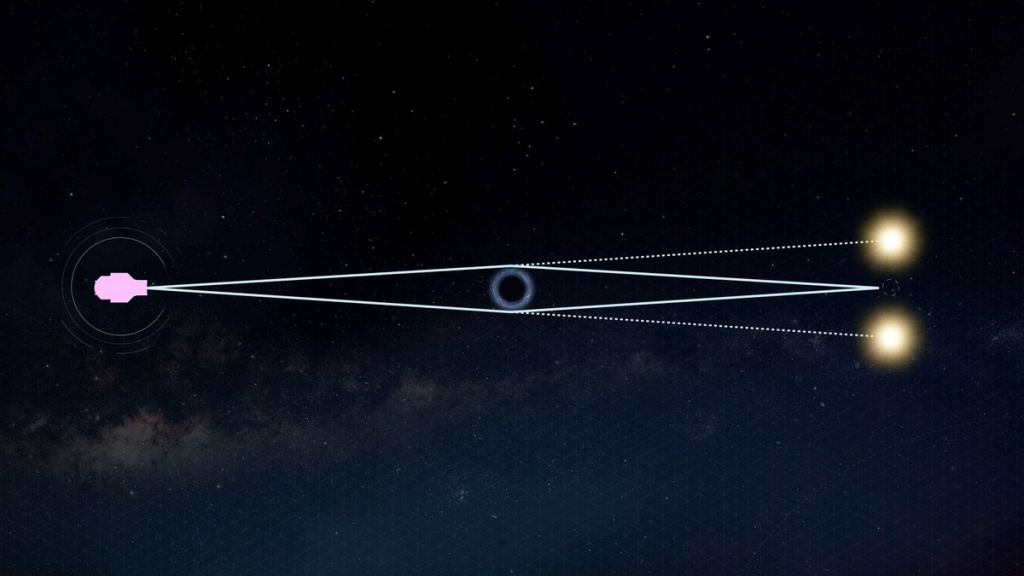Roman Space Telescope Will Also Find Rogue Black Holes
By Andy Tomaswick
In the past we’ve reported about how the Roman Space Telescope is going to potentially be able to detect hundreds of thousands of exoplanets using a technique known as “microlensing”. Exoplanets won’t be the only things it can find with this technique though – it should be able to find solitary black holes as well.
Solitary black holes are unique, as most black holes that scientists have “found” are those that are directly interacting with another object. However, those that are relatively small that could be roving around the galaxy by themselves which would be almost impossible to find since they absorb all electromagnetic wavelengths.
Usually these small black holes weigh around 10 times the weight of the sun. They form when a star dies and either goes supernova or collapses directly into a black hole, depending on its weight. If the black hole isn’t surrounded by any gas or dust to absorb, it would then become essentially invisible to almost all instruments.
So far scientists have found 20 of these “stellar mass” black holes, but only because they are next to a different astronomical object, making their gravitational force apparent in the way that companion object moves.
Credit: NASA
The neat thing about the microlensing technique that Roman will use to detect planets is that any large gravitational field will cause the microlensing effect. So if Roman sees what appears to be a microlensing effect around something where there is not an obvious source of mass, it is likely to be a black hole causing it.
In order to find the slight disturbances that would cause the microlensing, Roman will have to stare at hundreds of millions of stars for a very long time. But that is exactly what it is designed to do. With this additional data, scientists will be able to answer questions such as why solitary black holes only seem to mass around 10x what the sun does, or exactly how many stellar-mass black holes there are in the galaxy. The current estimate is around 100 million.
No matter the answers to these questions, Roman will provide more data to inform conclusions on these questions and many others when it launches around 2025.
Learn More:
NASA – How NASA’s Roman Space Telescope Will Uncover Lonesome Black Holes
UT – What’s the Connection Between Stellar-Mass Black Holes and Dark Matter?
UT – How Much of the Universe is Black Holes?
Lead Image:
Graphic showing how microlensing around a black hole would work.
Credit: NASA’s Goddard Space Flight Center Conceptual Image Lab
The post Roman Space Telescope Will Also Find Rogue Black Holes appeared first on Universe Today.

April 19, 2021 at 09:27AM
via Universe Today read more...

Post a Comment